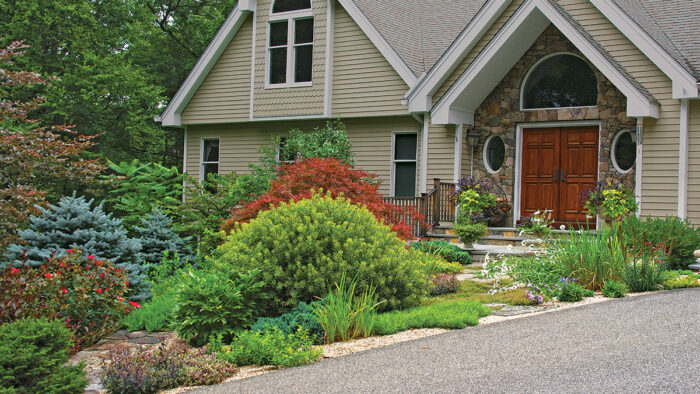
Creating an entryway that truly works is a worthwhile investment. You will enjoy how it makes your home look and feel, and providing a welcoming first glimpse of your home and property will increase that all-important ‘curb appeal’ if and when you sell your home.
If you don’t use your entry path every day, or even if you do, it can be easy to overlook design problems that would be more obvious to a first-time guest. To see your entryway with fresh eyes, spend some time in the space; take photos and pay close attention to your senses.
Imagine you are visiting for the first time. From the spot where you would park your car, is it immediately clear which door you should use? Is the approach easy and safe? How does the space make you feel? Do major visual elements— the building facade, hardscaping, and plantings—feel balanced?
Hardscaping provides a framework
When evaluating a landscape, I always look at the hardscaping first. At a minimum, all walking surfaces should be stable and even, never smooth or slick, and free of tripping hazards. Grade changes should be handled in a safe, predictable way.
If possible, a front walk should be wide enough for two people to walk comfortably abreast, which requires at least a 4- to 5-foot width. The front door stoop should be large enough to accommodate an outward-swinging door—code requires a minimum width and depth of 3 feet. If space allows, consider including a “milling area” near the front door. This is a sort of mini patio where people can pause for greetings and goodbyes as they come and go.
Good lighting will keep your entry walk safe and accessible after dark. Entryway lighting should be bright enough to help visitors find your front door and navigate your walkway with confidence.
Case study 1: Terraces tame a steep slope
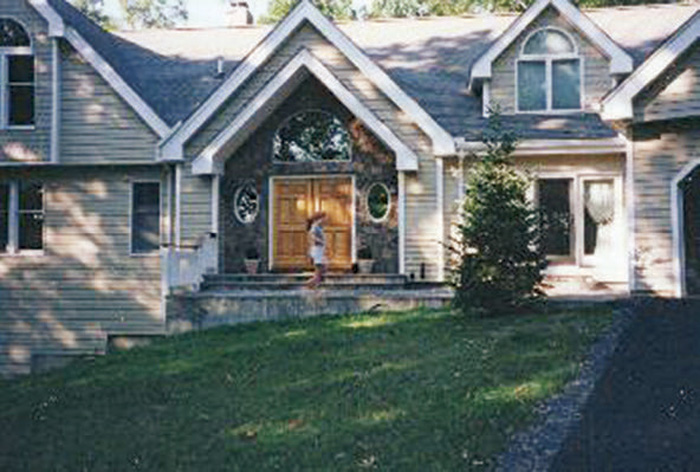
This large home had a relatively small, sloping front yard. The lawn was difficult to maintain, and its awkward angle left the front of the house feeling exposed. To solve these problems, we terraced the slope with two retaining walls, creating a well-proportioned garden that anchors the home and gives it visual context.
Challenges:
- With no other focal points in the landscape, the facade of the house overwhelmed the lot.
- The original entry path hugged the front of house and was crowded by a tree that would soon outgrow its space.
- The steep slope of the lot made the house feel exposed and disconnected from its surroundings.
- The sloping lawn lacked interest and was difficult to maintain.
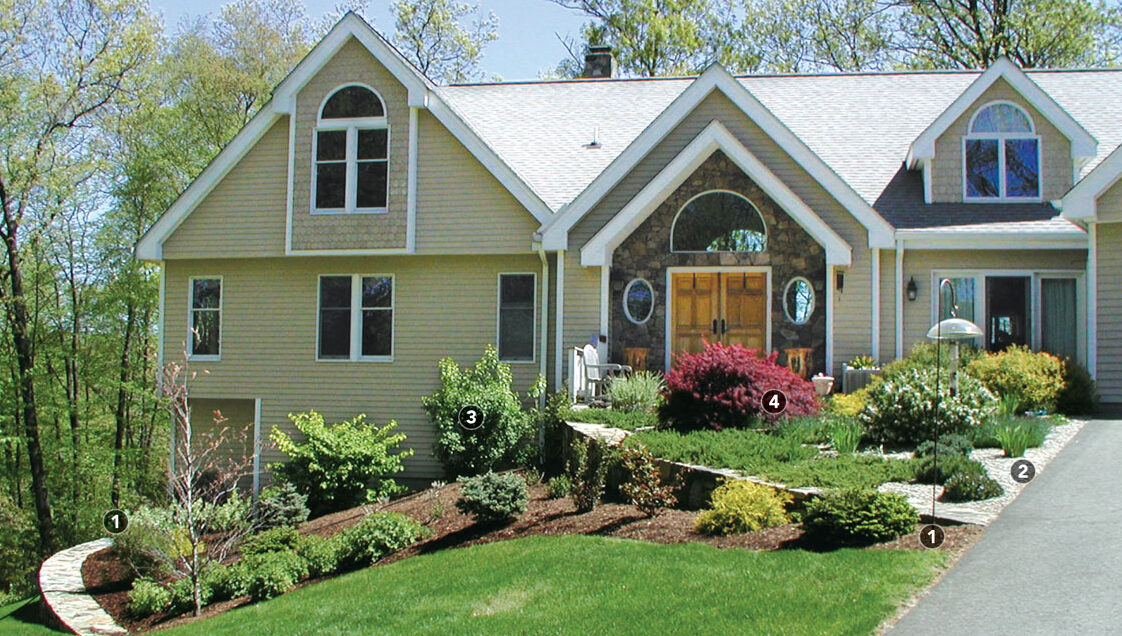
Solutions:
- Retaining walls created terraces that can be planted, filling the visual space in front of the house.
- The path from the driveway now starts about a car length out from the garage. Guests approach the front entrance through a colorful gravel garden that has plenty of visual interest.
- The massing of the terrace plantings helps to anchor the house, giving it a solid base.
- Terracing provided level ground for the entry walk, and the slope is now softened by an attractive mix of low-maintenance plants.

Plantings give an entryway personality
Once you are happy with your hardscaping, it’s time to focus on the fun part: the garden. For a main entry, I like a mix of evergreens, perennials and flowering shrubs for year-round interest, with repeating shapes and colors to help lead the eye through the design. When planting, site evergreens first, then work through the rest of your plants, from largest to smallest. If you like to change your color palette each year, leave space for annuals.
A good entry garden gives a home context and can be more than just a long row of foundation plantings on either side of the door. If you have the space, why not claim some lawn and create a garden room around your entry walk? Placing a bench and some well-scaled trees or shrubs along the way can result in a comfortable space that has a sense of enclosure.
Whether your property is large or small, it is essential to scale entryway plantings properly. Trust me, those adorable baby trees will grow! Research a plant’s mature diameter; divide that number in half, and you have the minimum planting distance from your path or home.
Think about how you want to feel and how you want others feel when approaching your home. You can use a simple mix of ground covers and grasses for a modern feel, or, if your architecture calls for a cottage garden, then go in that direction. A successful design will give your guests plenty of breathing room and a warm welcome on the way to your front door.
Case study 2: A sweeping curve guides the way

Many homes, for better or worse, have a garage door as a focal point on the driveway approach. This can cause confusion—guests may have trouble figuring out where the front door is or which entry they are expected to use. To reduce the impact of this home’s garage and give the property more curb appeal, we created a walkway with a sweeping curve that guides visitors around an inviting entryway garden.
Challenges:
- The walkway entrance was very close to the garage, not where a guest would get out of their car.
- The narrow path felt restrictive. Although there was a massive lawn, the path said “You can’t go out there.” Planting options for the skinny bed next to the house were very limited.
- The proportions of the walkway were out of balance. The path was so close to the building that it felt claustrophobic, as though the house were looming over you.
- A narrow porch and skinny walkway provided no space for greeting or departing.
- The 90-degee turns were awkward—that is not how people walk!
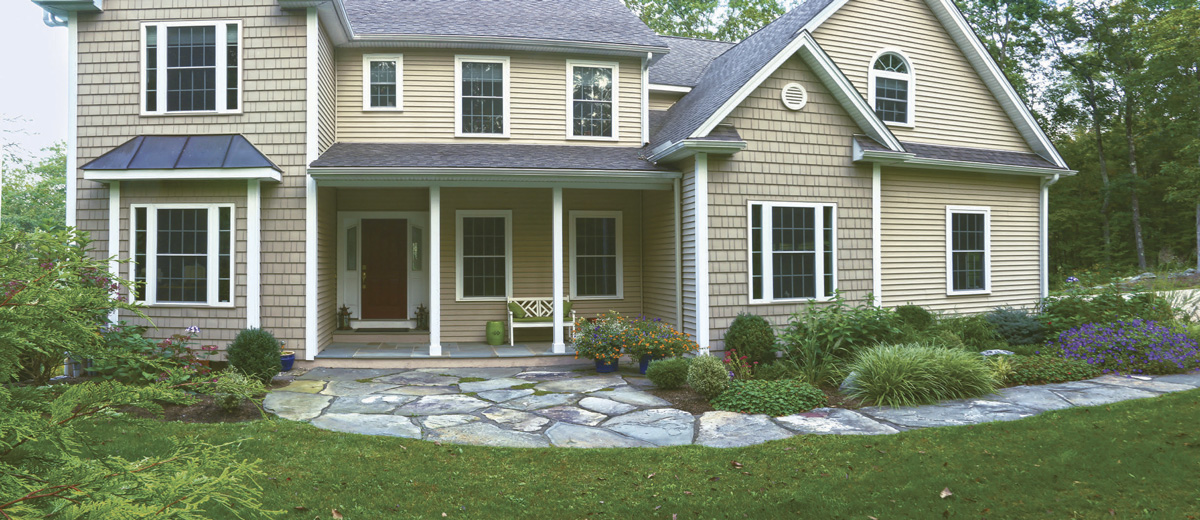
Solutions:
- The head of the path is now closer to where visitors get out of their cars, which makes the space more welcoming.
- Shrubs and perennials fill the space between the pathway and the house, giving the homeowners and their guests an enjoyable view as they approach the front door.
- Bringing the landscape elements out from the house helps ground the mass of the house and connect it to the landscape.
- A milling area in front of the porch makes both the porch and the walkway much more functional.
- A sweeping curve gently and efficiently orients visitors toward the front door.
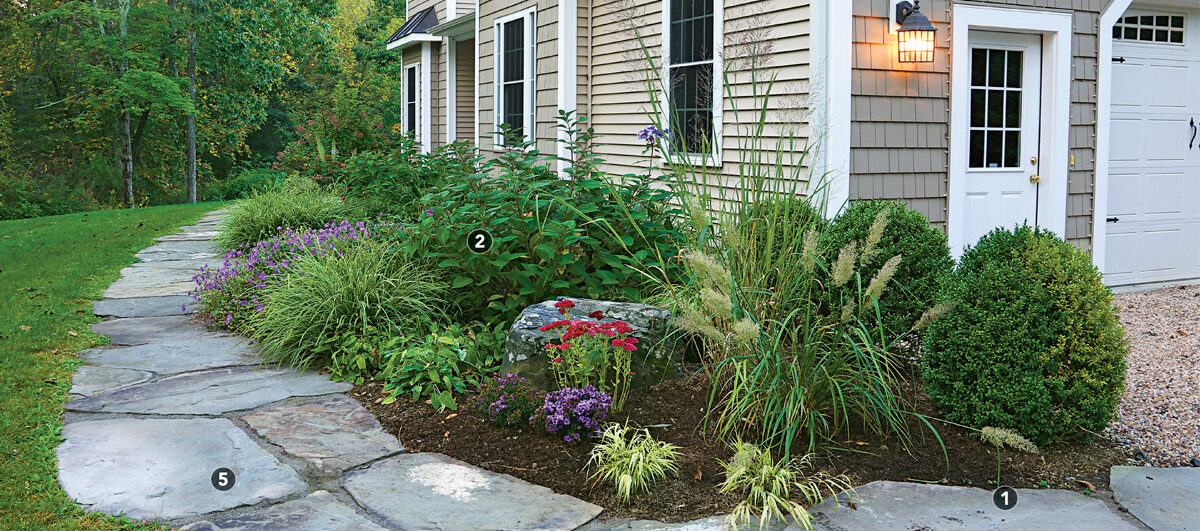
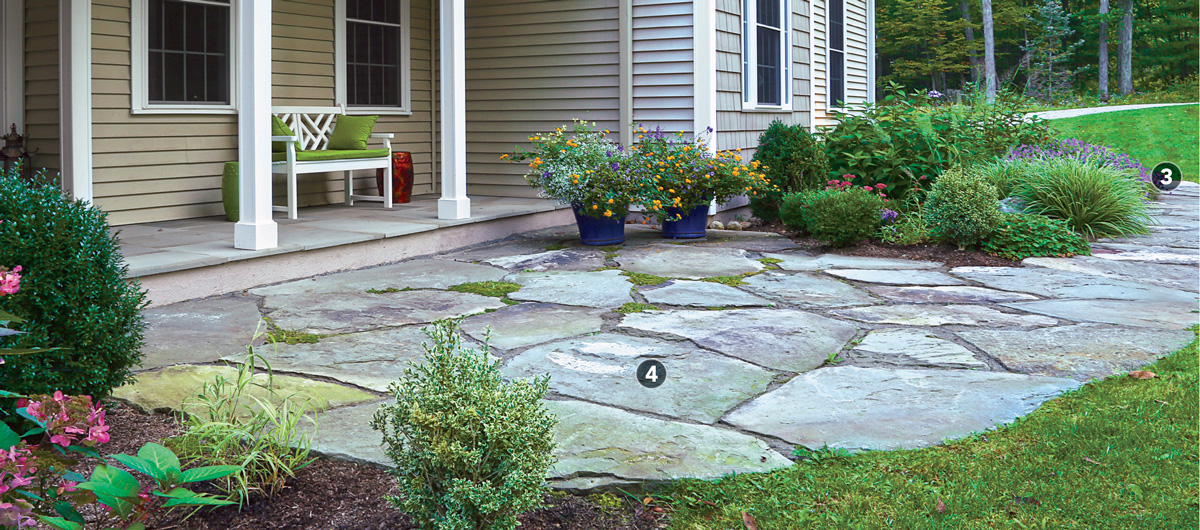
Catharine Cooke and her husband, Ian Gribble, own Spring Lake Garden Design in Sherman, Connecticut.
Photos, except where noted: courtesy of Spring Lake Garden Design
Illustrations by Elara Tanguy
Fine Gardening Recommended Products

SHOWA Atlas 370B Nitrile Palm Coating Gloves, Black, Medium (Pack of 12 Pairs)
Fine Gardening receives a commission for items purchased through links on this site, including Amazon Associates and other affiliate advertising programs.

The Crevice Garden: How to make the perfect home for plants from rocky places
Fine Gardening receives a commission for items purchased through links on this site, including Amazon Associates and other affiliate advertising programs.

National Wildlife Federation®: Attracting Birds, Butterflies, and Other Backyard Wildlife, Expanded Second Edition (Creative Homeowner) 17 Projects & Step-by-Step Instructions to Give Back to Nature
Fine Gardening receives a commission for items purchased through links on this site, including Amazon Associates and other affiliate advertising programs.

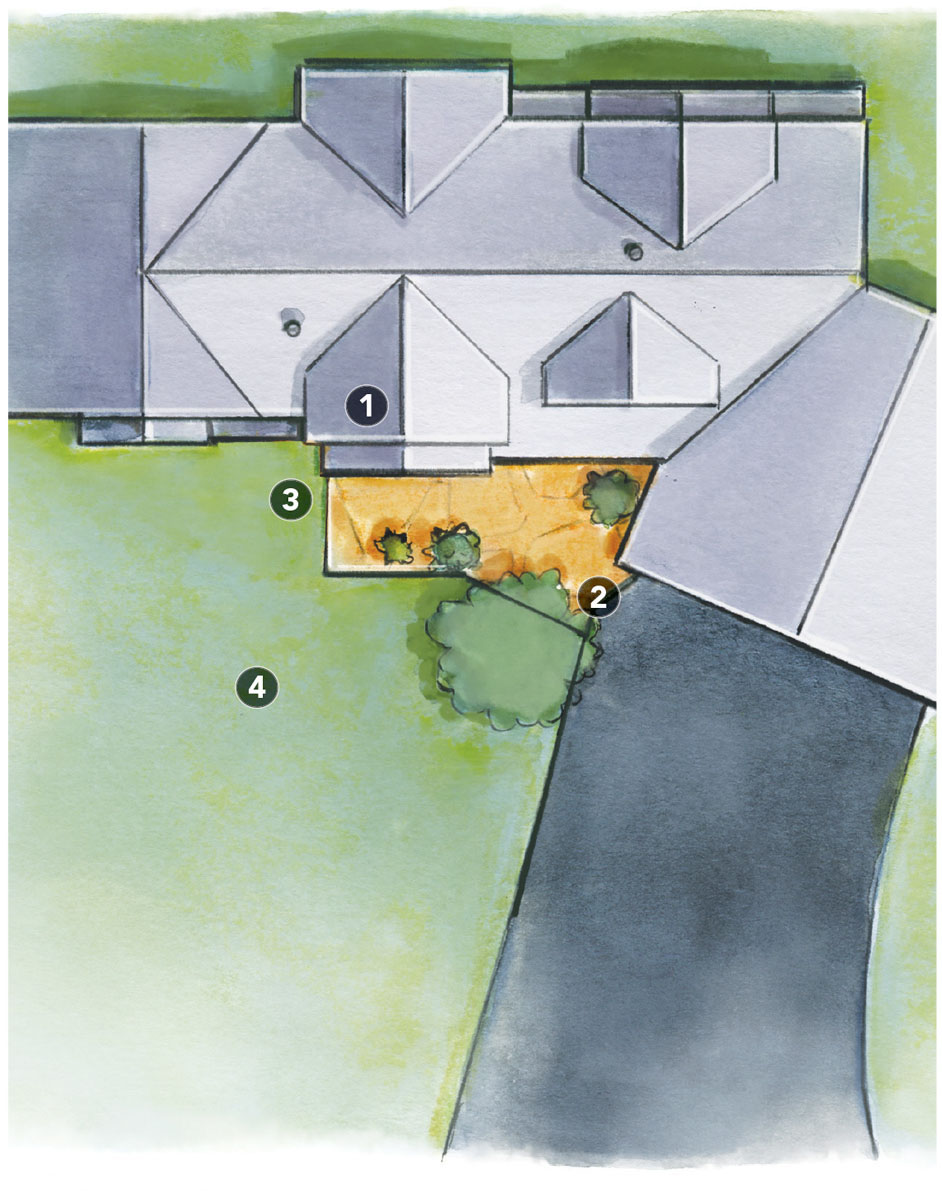
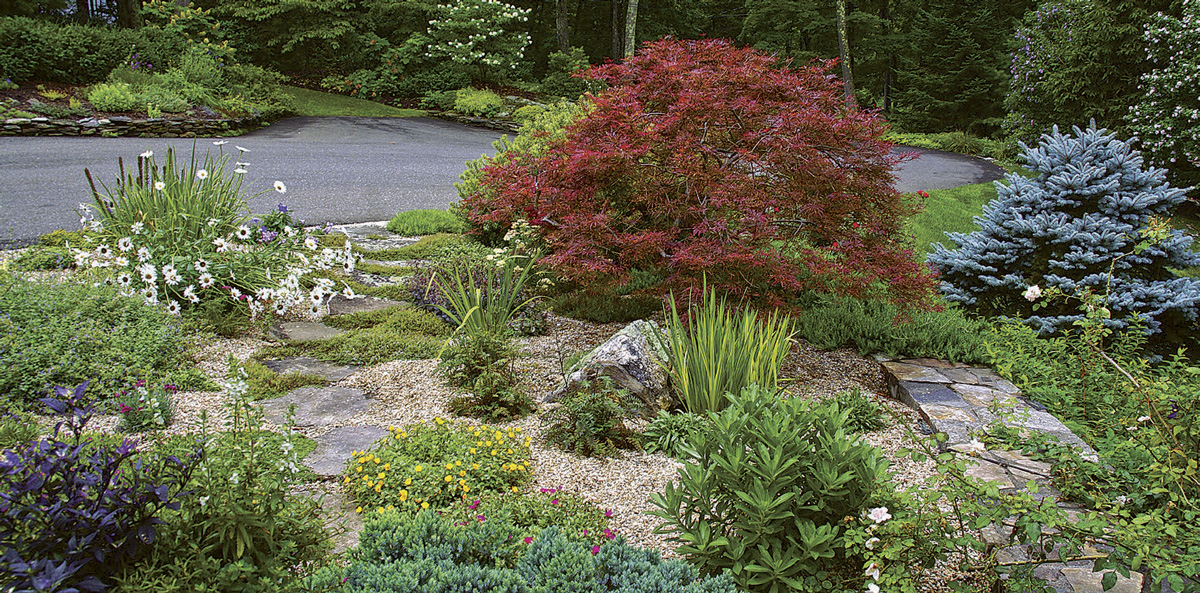
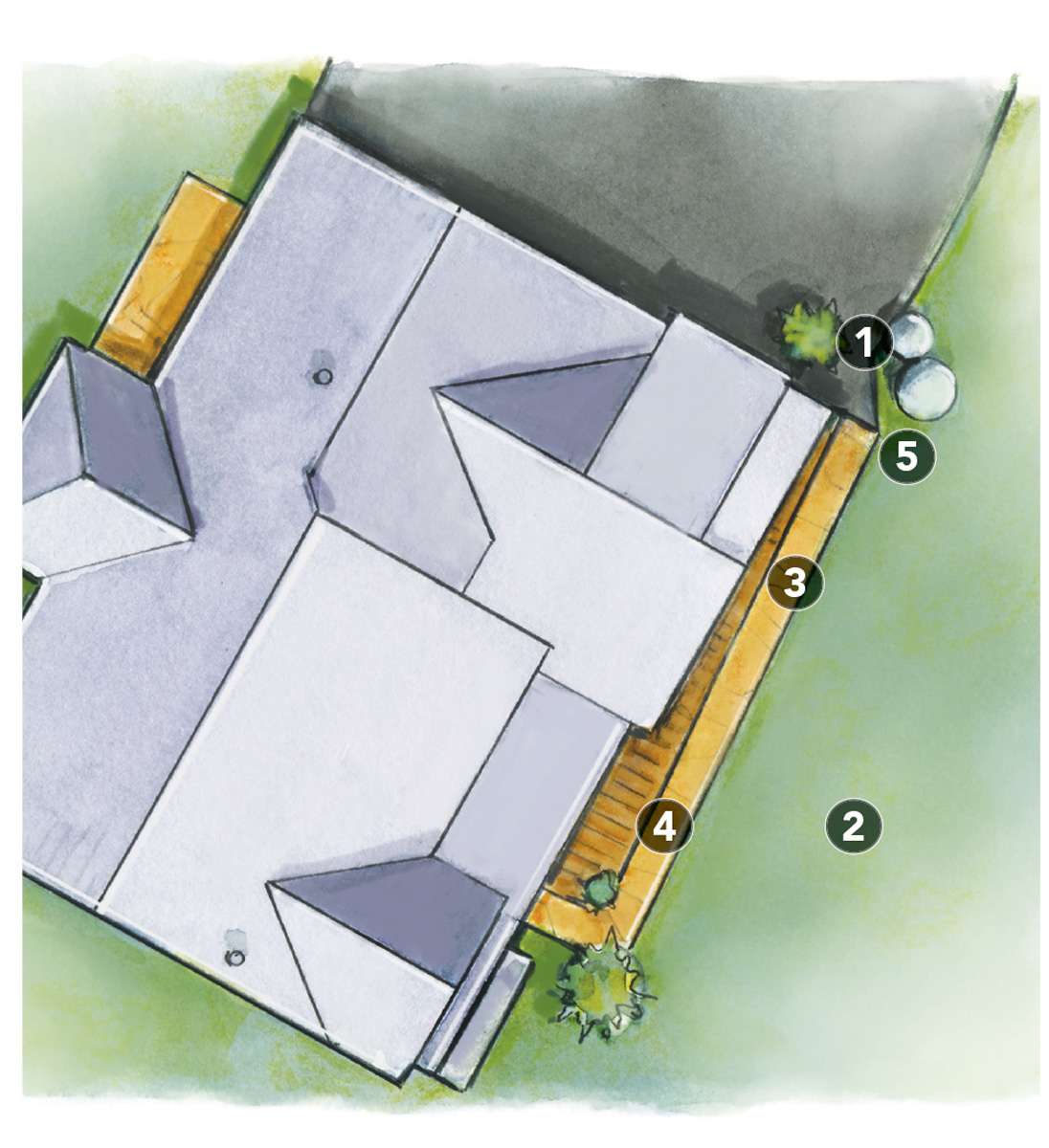



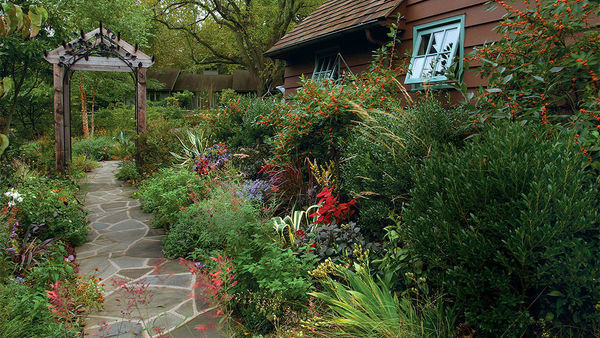













Comments
Log in or create an account to post a comment.
Sign up Log in